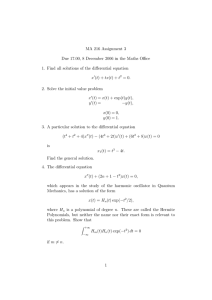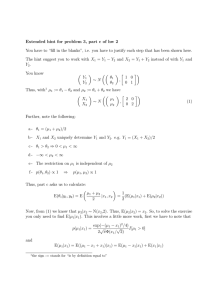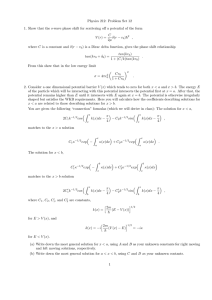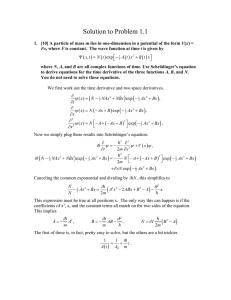MA 2327 Assignment 3 Due 29 October 2015
advertisement
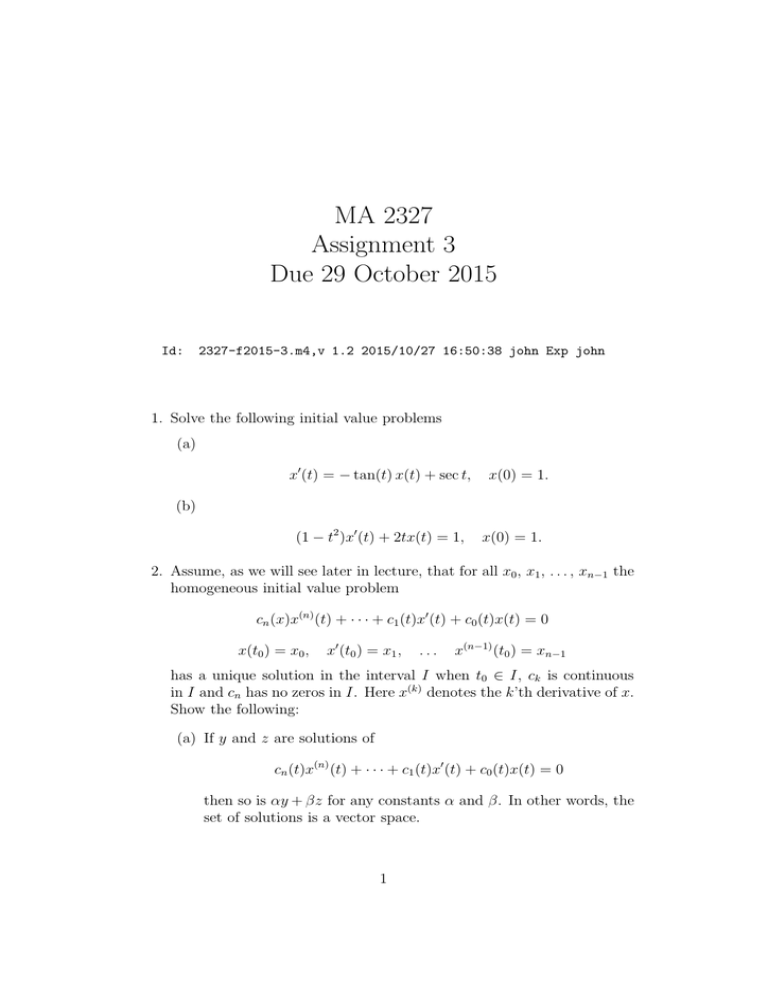
MA 2327 Assignment 3 Due 29 October 2015 Id: 2327-f2015-3.m4,v 1.2 2015/10/27 16:50:38 john Exp john 1. Solve the following initial value problems (a) x′ (t) = − tan(t) x(t) + sec t, x(0) = 1. (b) (1 − t2 )x′ (t) + 2tx(t) = 1, x(0) = 1. 2. Assume, as we will see later in lecture, that for all x0 , x1 , . . . , xn−1 the homogeneous initial value problem cn (x)x(n) (t) + · · · + c1 (t)x′ (t) + c0 (t)x(t) = 0 x(t0 ) = x0 , x′ (t0 ) = x1 , ... x(n−1) (t0 ) = xn−1 has a unique solution in the interval I when t0 ∈ I, ck is continuous in I and cn has no zeros in I. Here x(k) denotes the k’th derivative of x. Show the following: (a) If y and z are solutions of cn (t)x(n) (t) + · · · + c1 (t)x′ (t) + c0 (t)x(t) = 0 then so is αy + βz for any constants α and β. In other words, the set of solutions is a vector space. 1 Id: 2327-f2015-3.m4,v 1.2 2015/10/27 16:50:38 john Exp john 2 (b) If y and z are solutions of cn (t)x(n) (t) + · · · + c1 (t)x′ (t) + c0 (t)x(t) = f (t) then y − z is a solution of cn (t)x(n) (t) + · · · + c1 (t)x′ (t) + c0 (t)x(t) = 0 (c) If y is a solution of cn (t)x(n) (t) + · · · + c1 (t)x′ (t) + c0 (t)x(t) = 0 and z is a solution of cn (t)x(n) (t) + · · · + c1 (t)x′ (t) + c0 (t)x(t) = f (t) then y + z is a solution of cn (t)x(n) (t) + · · · + c1 (t)x′ (t) + c0 (t)x(t) = f (t) (d) The initial value problem cn (t)x(n) (t) + · · · + c1 (t)x′ (t) + c0 (t)x(t) = f (t) x(t0 ) = x0 , x′ (t0 ) = x1 , ... x(n−1) (t0 ) = xn−1 has at most one solution. (e) Suppose that the differential equation cn (t)x(n) (t) + · · · + c1 (t)x′ (t) + c0 (t)x(t) = f (t) has at least one solution. Then the initial value problem cn (t)x(n) (t) + · · · + c1 (t)x′ (t) + c0 (t)x(t) = f (t) x(t0 ) = x0 , x′ (t0 ) = x1 , ... x(n−1) (t0 ) = xn−1 has a solution for any values of x0 , x1 , . . . , xn−1 .

